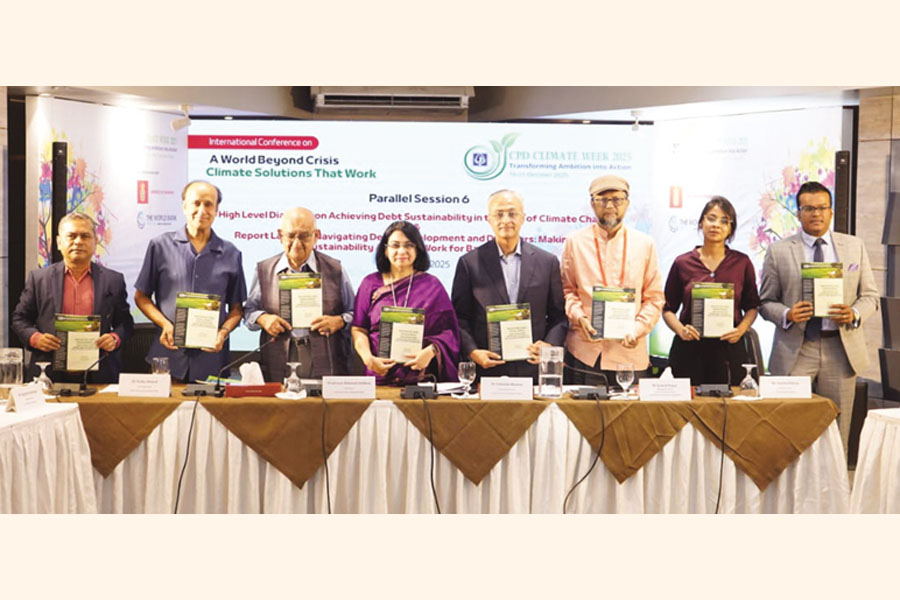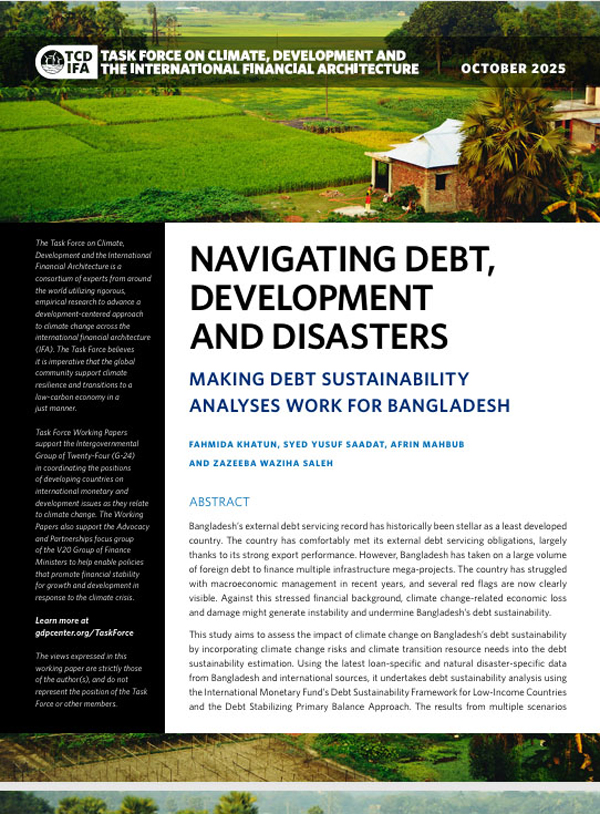
Published :
Updated :

There are two elements of standard public debt sustainability analysis. The sustainability of external debt and the sustainability of domestic debt. They are inter-related but often have different dimensions. Both are very important. As such, traditional debt sustainability assessment (DSA) conducted by the World Bank and the International Monetary Fund (IMF) rightly focus on the sustainability of total debt. In the context of Bangladesh, the sustainability of domestic debt is a bigger policy challenge than the sustainability of external debt. In particular, the issues of fiscal stability and liquidity concerns are much more closely related to domestic debt as compared with external debt.
The simplest way to illustrate this point is to look at the evolution of debt sustainability issues in Bangladesh. Total debt/GDP has been falling over time, climbing down from 48 per cent of gross domestic product (GDP) in FY2002 to 39 per cent in FY2025. This is due to external debt that has trimmed down sharply from 34 per cent of GDP to a mere 15 per cent of GDP over the same period. On the other hand, domestic debt has climbed from 13 per cent of GDP to 23 per cent. Reflecting this changing composition of total public debt, the interest cost has grown from 1.6 per cent of GDP to 2.2 per cent owing to the growing cost of domestic debt, which has risen from 1.3 per cent of GDP to 1.9 per cent whereas interest cost of external debt has remained flat at 0.3 per cent of GDP notwithstanding the growing interest rate of external debt.
As the title (Navigating debt, development and disasters: making debt sustainability analyses work for Bangladesh) of the paper under review suggest, the focus here is on external debt sustainability. But then in pages 56-61 the paper switches to sustainability of total public debt, where fiscal sustainability issues are brought in. I think the paper will benefit from making clear this distinction between sustainability of external debt and sustainability of total debt, where the dominant component is domestic debt and issues of fiscal sustainability and liquidity constraint are dominant and relevant.

The paper will also benefit from clarifying that liquidity constraint is not an issue for external debt sustainability. This is easily illustrated by looking at total debt servicing cost of PPG external debt. In FY2025 it stood at a mere US$ 3.4 billion, of which amortisation was US$2.0 billion. This is only 4.2 per cent of total export earnings of USD81 billion. I am aware that the interest cost of external (EXT) debt composition is growing. But even a doubling of the current weighted average interest cost from 1.4 per cent to 2.9 per cent does not create any liquidity constraint on external debt as the World Bank-IMFDSA simulations confirm.
Furthermore, there has been a rapid accumulation of PPG external debt in the past 15 months owing to extra-ordinary bop financing to accumulate reserves and stabilise the exchange rate. So, all EXT debt indicators including debt service payments will weaken in FY26 and FY27. Even so, IMF-World Bank DSA shows this temporary blip will stabilize after FY28. The payments risk is minimal.
What may trigger an EXT payments problem is when total EXT is considered including all private and public non-guaranteed borrowings and there is a huge export shock. The probability of this event is low. Even so, the payments crisis will affect private sector debt, especially the ST trade credit. PPG debt is safe from a payments crisis.
The second methodological and analytical question concerns how climate change effects are introduced in the DSA analysis. There are several ways this can be done. One way would be to argue that unless corrective steps are taken the costs of climate change would translate into lowering the average GDP growth path by destroying physical capital and land productivity. This gives a low case climate- induced growth path as compared with the base case. The DSA sensitivity tests then raise the debt to GDP and the export to GDP ratios. The other way is to assume that climate change corrections will increase total public spending, which will raise fiscal deficit and public borrowing, which is the way done in this paper. But note that this does not necessarily translate into one-to-one increase in external debt as assumed in this paper.
Indeed, it is more logical to argue that much of the additional expenditure will translate into domestic spending financed through domestic borrowing. Relief and rehabilitation type spending associated with natural disasters are mostly local cost spending. Foreign spending is mostly imported capital goods and will be a lower percentage of total damage control. So, in this approach, the more reasonable way of modelling would be to assume that the pressure would mount on domestic debt. Therefore, given the already growing domestic debt burden, the largest impact of climate change would be on fiscal sustainability of domestic debt rather than foreign debt.
Indeed, that has been the case in practice. To my knowledge so far climate adaptation and mitigation expenses have been not only much lower than necessary but mostly funded through domestic resources. Given the global reality, developing a climate response strategy based on expected financing from global climate facility or other sources of climate funds is bound to fail. While we can continue to fight for our legitimate claim that much of the climate-induced costs are owing to carbon releases from developed countries, in practice there is little hope that global funding support in a substantial amount will be forthcoming.
As an example, the Green Climate Fund was established in 2010 with a pledge to mobilise US$100 billion every year by 2020. What has been the actual outcome? As of 2018 a total of US$9.3 billion was collected during the first eight years of Global Climate Fund (GCF). A first-round replenishment effort pledged another US$10.0 billion for 2020-2025. A second-round replenishment effort generated an additional pledge of US$10.6 billion for 2026-2030. Assuming all pledges are honoured, total GCF funding would amount to US$29.9 billion over a 20- year period, which amounts to US$1.5 billion a year as compared with the dream of US$100 billion a year by 2020. Also, importantly, the total GCF funding for Bangladesh has been only US$461 million over the 15 -year period. This translates to a pittance amount of US$ 30 million per year.
Therefore, while we should continue to fight for greater global financing for climate-induced damages, at the policy level we must focus on mobilising more resources from domestic sources. I have done research in this area, and there is substantial scope for mobilizing domestic resources to fight climate change including through proper pricing of carbon fuel, adopting a carbon tax, adopting the polluter pays principle and adopting the beneficiary pays principle.
The paper may want to recognise this reality of global climate financing and strengthen its emphasis on the need for domestic financing through environmental fiscal reforms, which is a big missing element in policy making in Bangladesh. Additionally, there is substantial scope to climate sensitise the overall public spending and especially the public investment program that will allow a realignment of the total MLT external borrowing in stronger support for climate financing without necessarily increasing the external debt burden. Mainstreaming climate change into budget making and the PIP is a top policy priority that ought to be emphasised by this paper.
Dr Sadiq Ahmed is Vice Chairman, Policy Research Institute of Bangladesh (PRI). sadiqahmed1952@gmail.com


 For all latest news, follow The Financial Express Google News channel.
For all latest news, follow The Financial Express Google News channel.